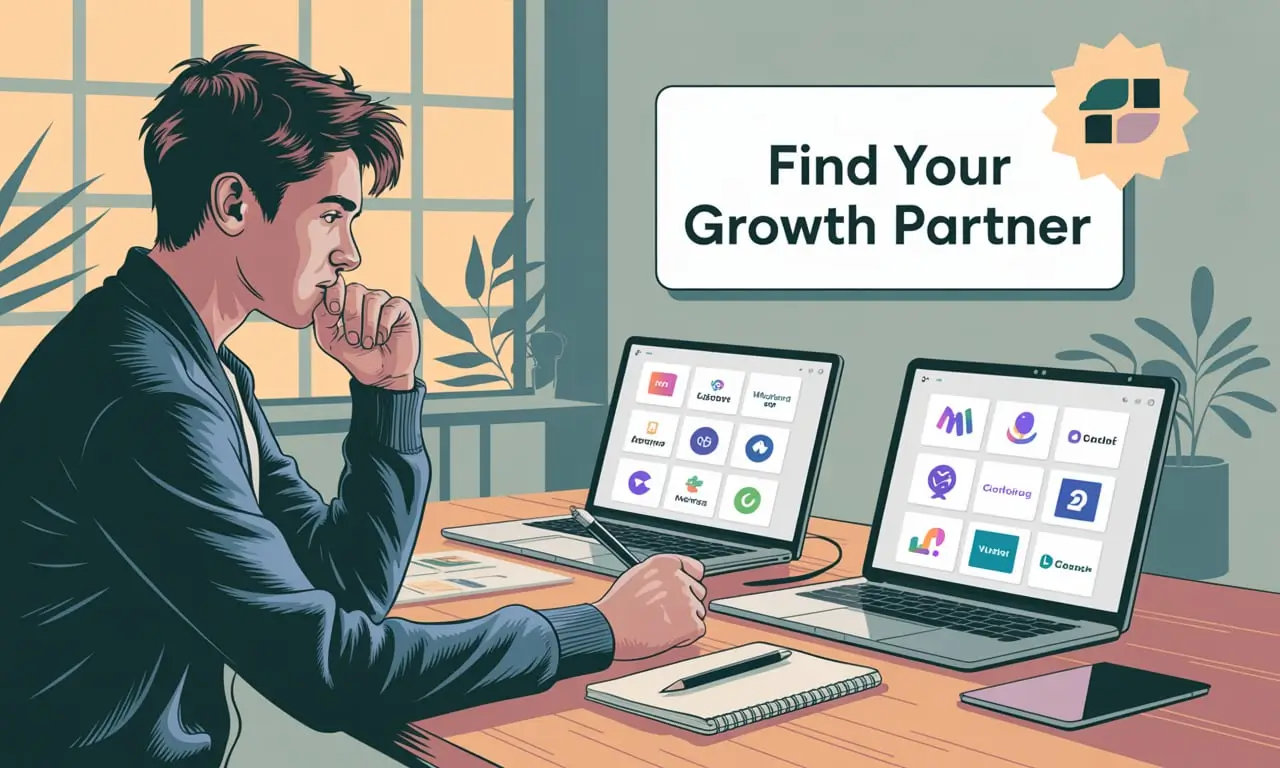Define what you need before you contact anyone
A good brief saves money and time. Set out the basics so every agency is quoting for the same job.
Set clear outcomes
Decide what success looks like in simple numbers. Examples:
- 30 qualified enquiries per month within six months.
- Reduce cost per lead by 25 percent within three months.
- Reach page one for three local search terms within four months.
Fix the boundaries
- Services you need now, and what can wait.
- Target audience and locations.
- Monthly budget range and contract length you can accept.
- Tech you already use, such as your website platform or CRM.
Gather your assets
Share access or samples of your site, brand files, past ad accounts, and any tracking in place. This helps an agency give a realistic plan and price.
Shortlist the right type of agency
Not every agency suits every small business. Aim for a tight shortlist of three to five.
Match by service fit
- Full service: helpful if you need one team to handle site updates, SEO, ads, and content.
- Specialist: better if one channel will drive most results, such as Google Ads or local SEO.
- Sector focused: useful if your field has rules, long sales cycles, or niche keywords.
Check size and seniority
A smaller agency can be more hands-on. A larger one may have deeper benches. Ask who will do the work day to day and how many clients each person handles.
Look for proof that matches your goals
Favour case studies with your type of business, similar budgets, and similar aims. Screenshots of real dashboards, before and after metrics, and plain commentary beat glossy claims.
How to read proposals and compare like for like
Ask each agency for a written plan with deliverables, timelines, and costs. Then score them against the same criteria.
Must-haves in a solid proposal
- Diagnosis: what they found in your accounts, website, and competitors.
- Plan: the exact work for the first 90 days and the next 90.
- KPIs: the numbers they will target and how they will measure them.
- Reporting: what you will see, how often, and who explains it.
- Dependencies: what they need from you, such as content or approvals.
- Fees: clear pricing, what is included, and what triggers extra costs.
Pricing models you will see
- Monthly retainer for ongoing work such as SEO, content, and ads management.
- Project fee for defined tasks such as a website rebuild or analytics setup.
- Ad spend plus fee where management is a flat fee or a percent of media spend.
- Hybrid where a small retainer covers strategy and reporting, with task-based add-ons.
Low price can be costly if it means thin delivery or frequent add-ons. High price should come with stronger planning, senior input, and clear accountability.
Questions to ask on the discovery call
Use the same core questions with each agency so you can compare answers fairly.
Strategy and fit
- If we had to pick one channel for results in 90 days, what would you choose and why?
- What would you stop doing based on our current data?
- How will you handle seasonality in our field?
Team and process
- Who will be our day-to-day contact and who does the actual work?
- How many accounts does that person manage at once?
- What does the first 30, 60, and 90 days look like?
Measurement
- Which KPIs will you own and which sit with us?
- How will you track calls, forms, and online sales end to end?
- Can we see example reports with real numbers, redactions allowed?
Risk and quality control
- What will you do if results lag after 60 days?
- How do you test ads, keywords, and landing pages without wasting budget?
- How do you keep our site safe during technical changes?
Spot the red flags early
A few warning signs will save you pain later.
- Vague answers with no numbers or concrete next steps.
- No access to view working files or ad accounts.
- Overlong tie-ins without clear exit terms.
- Ownership gaps where you do not own ad accounts, creatives, or tracking.
- Guaranteed rankings or results that ignore factors outside their control.
- One-size-fits-all deliverables that do not reflect your brief.
Make reporting and accountability non-negotiable
What good reporting looks like
- One dashboard you can access at any time with traffic, leads, sales, cost per lead, and return on ad spend, as relevant.
- A monthly written summary that explains what happened, what was learned, and what will change next.
- Call and form tracking that connects campaigns to revenue, not just clicks.
Agree KPIs and thresholds
Set target ranges rather than single numbers. For example:
- Leads per month: 25 to 35 by month three.
- Cost per lead: under £40 by month three.
- Conversion rate from landing pages: 8 to 12 percent by month two.
Ensure clean setup: data, access, ownership
Protect your assets from day one.
- All ad accounts, analytics, and tag containers should be in your company’s name.
- Grant the agency user access. Do not let them create accounts that they own.
- Keep shared folders for creatives, copy, and reports.
- Document logins, tracking IDs, and naming conventions.
Plan a fair pilot to prove the fit
You do not need a year-long tie-in to test fit.
A simple 90-day pilot
- Month 1: audit, tracking fixes, quick-win changes to pages, first test campaigns live.
- Month 2: expand winners, pause poor performers, add two fresh tests, publish one helpful article or guide.
- Month 3: refine targeting and bids, improve landing pages, agree the next quarter plan based on data.
Set the budget so the pilot can produce enough data to be meaningful. Underfunded tests waste time.
Understand how agencies price creative and content
Strong creative can lift results without raising spend.
- Landing pages: ask who writes copy, who designs pages, and how many variants you get per quarter.
- Ads: confirm how many headlines and descriptions will be tested each cycle.
- Content: agree a monthly output, such as one long article or two shorter posts with simple graphics.
Ask for examples that show the problem, the change made, and the impact, such as a lift in conversion rate.
Read the contract with care
Do not rush this step.
- Term: avoid long lock-ins at the start. A 3-month pilot followed by 30-day rolling is common.
- Notice: confirm the notice period and any fees.
- Ownership: you should own accounts, creatives, and data.
- IP and reuse: confirm you can keep and reuse assets if you leave.
- Service levels: response times, meeting cadence, and reporting dates.
- Privacy: how they handle personal data and cookie consent on your site.
How to decide between two good agencies
If two candidates look strong, use a simple scoring sheet.
Sample scoring grid
Score each item out of 5.
- Fit to brief and goals.
- Quality of plan for first 90 days.
- Case studies that match your size and sector.
- Senior time on your account.
- Reporting and data clarity.
- Contract terms and ownership.
- Price against planned output.
Pick the one with the best mix of plan quality, team strength, and fair terms, not just the lowest fee.
What to do in the first month after you hire
Make it easy for your new partner to move fast.
- Share logins and grant access on day one.
- Book a weekly check-in for the first six weeks.
- Agree your sign-off process for ads and pages.
- Confirm the dashboard metrics you want to see.
- Keep a shared action log with owners and due dates.
Summary
Choosing the best digital agency for a small business is a process, not a guess. Define outcomes, shortlist by fit, test with a 90-day plan, and demand clear reporting with fair ownership. If an agency can explain what they will do, show proof, and agree to open data, you are on the right track.


